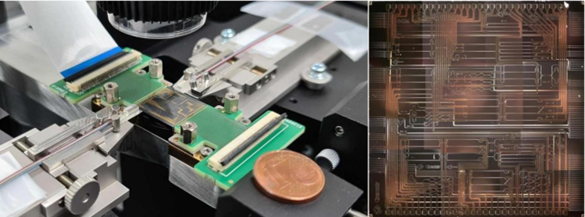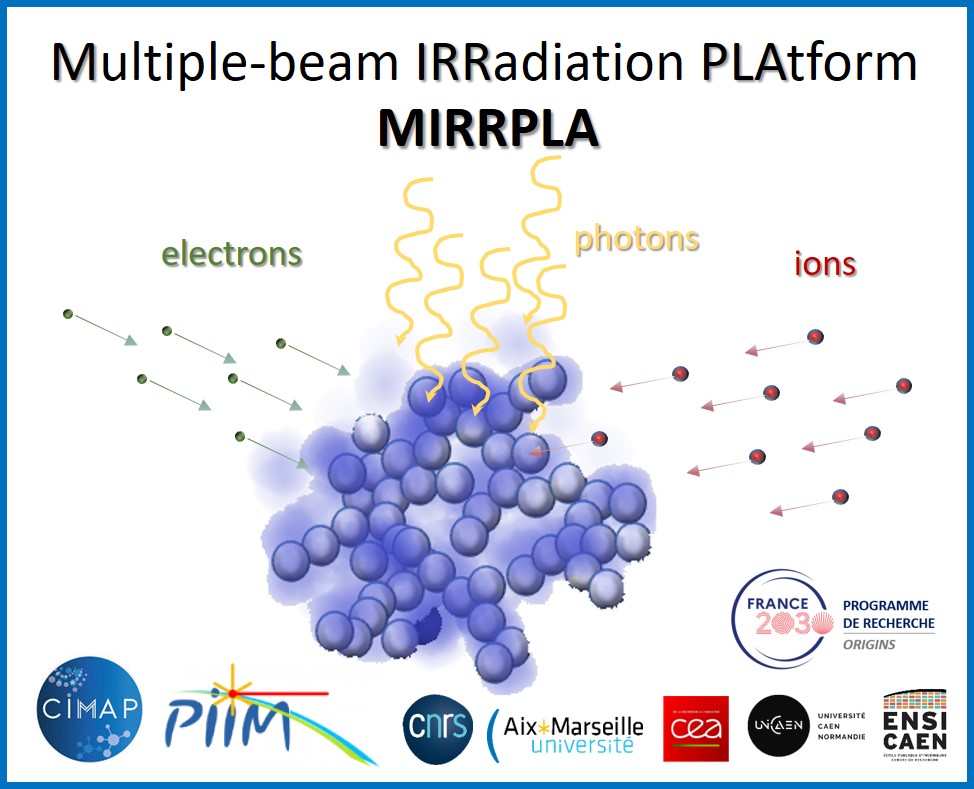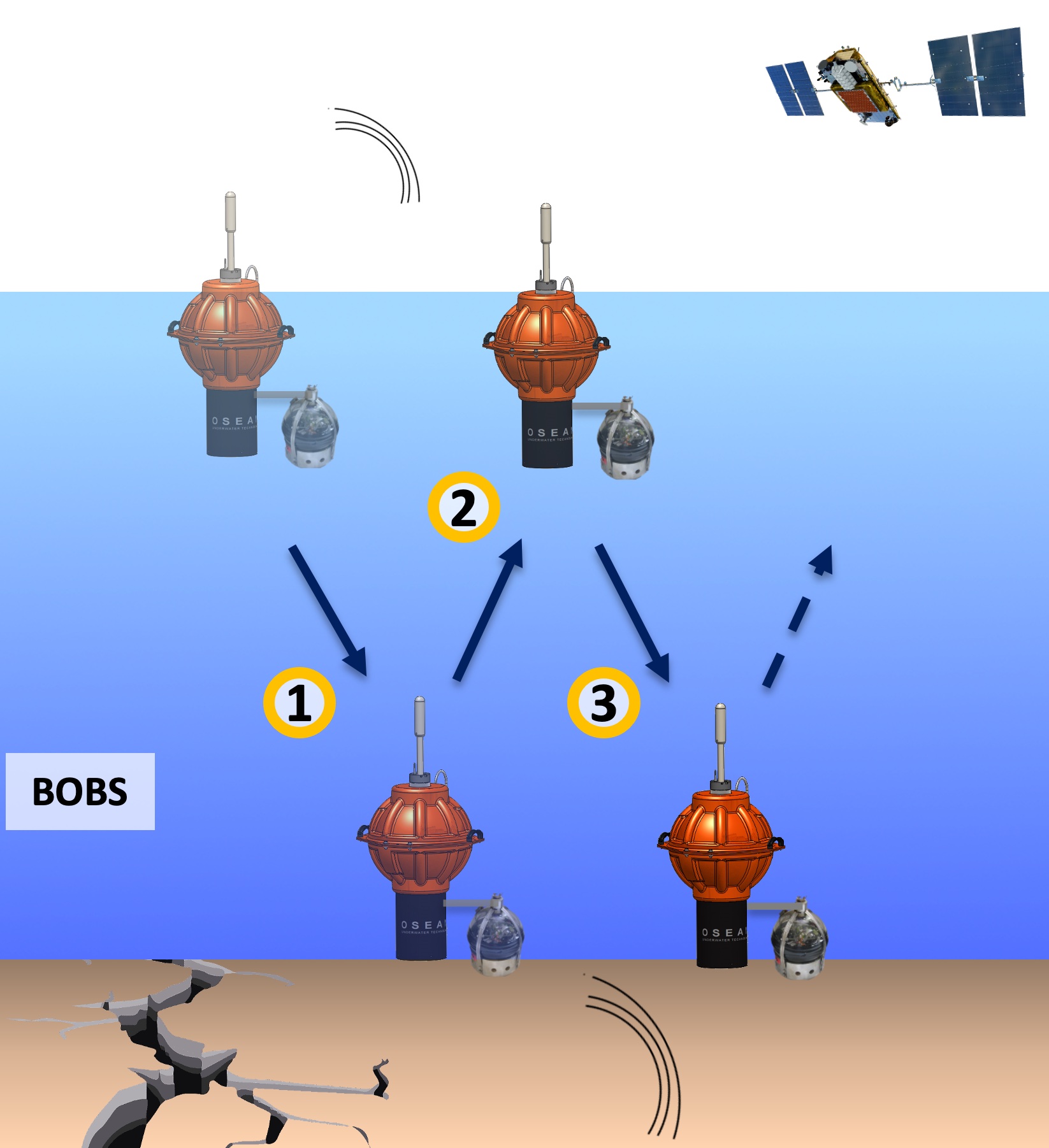
The optics of the future for direct detection of exoplanets
Overview
Develop the next generation of recombiners for high-contrast interferometry based on integrated optics.
Frantz MARTINACHE, MdC Observatoire de la Cote d’Azur
Elsa HUBY, Astronome Adjointe, Observatoire de Paris
Sylvestre LACOUR, CNRS, LESIA
Jean-Philippe BERGER, IPAG
Guillermo MARTIN, IPAG
The aim of our PHOTONICS project is to contribute to the development of optical solutions exploiting integrated optics technology for the design of single-mode interferometric recombiners. A unique property of these recombiners is that, with a simple modification of its interface, the same component can be exploited in a wide variety of contexts: at the focus of a single conventional telescope as well as at the common focus of a very large base interferometer, whether on the ground or in space. This property makes it possible to draw up a joint technology development plan, exploiting various photonic platforms in applications sharing the same goal: to overcome today’s observational constraints and lead to the detection and characterization of habitable planets.
The various options we propose to explore during this project will: increase the efficiency of optical coupling with telescopes, which is essential for the detection of weak planetary signals; enable the simultaneous recombination of a large number of beams, which will produce rich information, pushing the limits of detection towards lower-mass objects; incorporate robustness to environmental perturbations; and cover a large number of spectral bands, from the visible to the mid-infrared. When implemented on observatories already in service or under construction, these interferometric recombiners based on integrated optics will open up access to new, currently inaccessible regions of the parameter space describing extrasolar planets.
To develop
Our researchs
Increasing the optical coupling efficiency of single-mode solutions with beams from large telescopes
Develop circuits capable of recombining a larger number of beams, exploiting optical circuit multiplexing. Design optical interfaces optimizing injection into single-mode guides.
Extending the spectral range of integrated optics for astrophysics
Prototype optical circuits based on substrates for use in the visible and mid-infrared ranges.
Increasing the high-contrast potential of annulant recombiners based on integrated optics
Integrate active control of input beams and use thermo-optical functions to tune our recombiners in real time. Integrate laser back-propagation for improved metrological monitoring.
Extend the performance of high-contrast interferometry to wider spectral bands.
Developing solutions for achromatizing the functions performed by interferometric recombiners
Applications in cosmochemistry and nano-geochronology
The consortium
Observatoire de la Côte d’Azur, Lagrange, LESIA, IPAG
Scientific expectations
In the short term, the prototypes developed as part of this project could be integrated into instruments at the focus of large telescopes (the VLT, the Subaru Telescope, the ELT) and optical interferometers (the VLTI and CHARA) on the ground. As integrated optics are particularly interesting for on-board applications, our project also offers a framework for making this technology compatible with future major space observatories: the LIFE space interferometer project and the HWO large optical telescope project, both of which are strongly motivated by the scientific case for exoplanets.
Societal impacts
Our project is the fruit of a partnership involving not only the 3 laboratories making up the consortium, but also 3 academic partners (ESO, Subaru Telescope, Université Catholique de Louvain) and 5 industrial partners (CEA LETI, Thales Alenia Space France, Teem Photonics, Bright Photonics & Lionix).
The delicate specifications of our prototypes, motivated by the highly ambitious scientific case of exoplanets, push the possibilities of integrated optics to their limits, and will have a virtuous effect on the manufacturers associated with our research work, benefiting a technology that today plays a major role in the telecommunications field.
Consortium location
Nice (OCA/Lagrange), Paris (LESIA) et Grenoble (IPAG)


